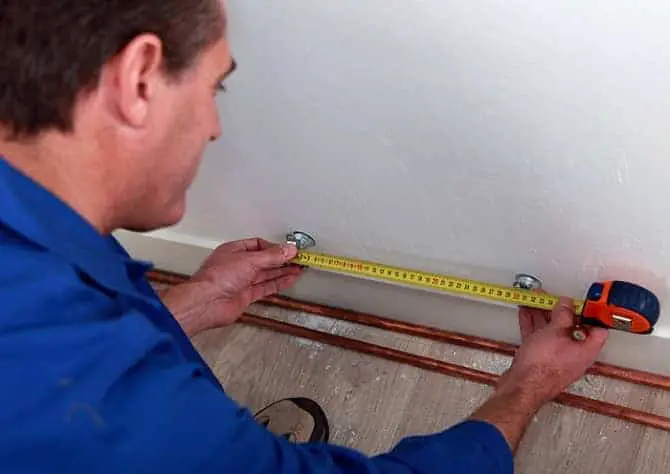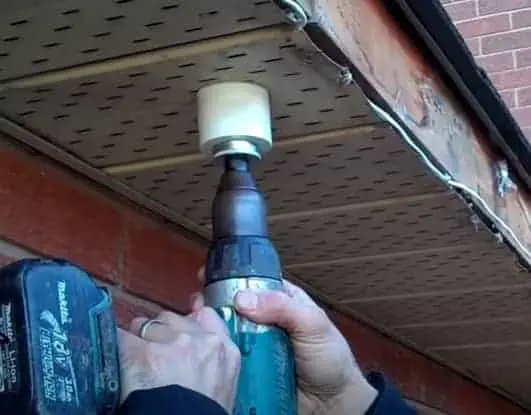So, you have already completed your bathroom renovation and furnishing. The only task left incomplete is to vent the bathroom fan. You might be pondering to find the right place to vent the bathroom fan. If it the case, you can consider the soffit.
Yes, seriously, a soffit can be a perfect venting location for the exhaust fans, although its purpose is to enhance the home aesthetics.
This guideline will describe how to vent a bathroom fan through soffit without the hassle and damaging the soffit itself. We have also focused on installing the fan through the soffit, not into it to block the air passing unconsciously.
Benefits of Venting Through Soffit
Did you ever see the eave or overhang portion of your rooftop? The soffit is the underneath side of such overhanging or eave section. It is added mainly for aesthetical purposes in one home. In most cases, a bathroom fan will go through the side walls or roof.
But due to many unavoidable and practical reasons, you might not access the side walls or roof to install the fan. If it the case, you will have to vent the fan through the soffit. It is easily accessible and doesn’t need extreme professional skills for the exhaust fan installation.
So, these days, many people prefer soffit over sidewalls or roofs to vent their bathroom fan.
How to Vent A Bathroom Fan Through Soffit
When you want to install the bathroom fan through a soffit, you must be careful. You have to ensure that the soffit isn’t damaged and the exhaust fan is also installed successfully. Thus, you have to consider two things at the same time.
Step 1: Ensuring Fewer Bends in The Hose
When you pass the vent hose through the soffit, you would want it to circulate maximum air and odor through it. Thus, getting a straight vent hose with the least bends will benefit you remarkably. It will permit you to mount the vent cover for the soffit straight.
A vent hose with bends or dips will most probably accumulate water and stagnate it in the lower parts. It will create an odor.
Step 2: Picking the Right-Sized for The Vent Hose

Vent hose is available in multiple sizes and diameters. So, you will have to fix the right size for the duct hose. It is imperative if you plan to replace an older duct vent hose with a new one. The size should be suitable for the exhaust fan already installed in the bathroom.
Old modeled bathrooms will equip with older fans with a 3” duct size mostly. On the contrary, most new exhaust fans and high-end models will equip with larger ducts. Thus, you will need a 4”, 6”, or 8” duct vent hose for installation.
Also, note that soffit vent covers in standard cases will already have an installed adapter for the 3”-6” duct vent hose.
Step 3: Cutting the Hole Through the Soffit

You have to ensure that the vent hose passes through the soffit correctly. Hence, you have to provide the location for the exhaust fan hose vent mounting properly. The site is between the soffit rafters. Optionally, the roof lookouts are an excellent location.
Mark the area on the soffit with a pencil or permanent marker. When you get the vent cover for the soffit, you will also get a template. You can use the manufacturer provided template to outline the circle to cut the hole later on it. Once you have marked the spot, you can proceed to cut the hold.
Use a tin snip or jigsaw to cut the hole in the proper size. Then, polish the edge with sandpaper to make it smooth. Then, you will have to pass the vent hose through the right location to the attic. Make sure you don’t damage the hose or soffit in the process.
Step 4: Connecting the Soffit Cover with The Duct Hose
Now, pull the duct vent hose about one foot outside of the soffit. During this time, measure the vent hose length and make sure it has the right size from the exhaust fan to the outside. You might have to cut the hose to the correct length. Use a sharp utility knife to cut the duct hose into your desired size.
It will help you to keep the vent hose straight. After that, use a clamp to mount the duct hose with the soffit cover. Use a flathead screwdriver to tighten the soffit cover screws. Lastly, use foil tape to cover the duct hose for added protection additionally.
We also write about How to Vent A Bathroom with No Outside Access.
Conclusion
You see that installing the duct vent for the bathroom fan through the soffit is easy. This guideline on how to vent a bathroom fan through a soffit will help you in this cause. It won’t require more than 30 minutes for you to accomplish the entire mounting task.
So, I recommend you practice the DIY project instead of calling for professional help. It will prominently help you save a good amount.





I was told to not go through the Soffit but to vent through a sidewall or the roof because the warm air will be sucked right back into the attic through the baffles.